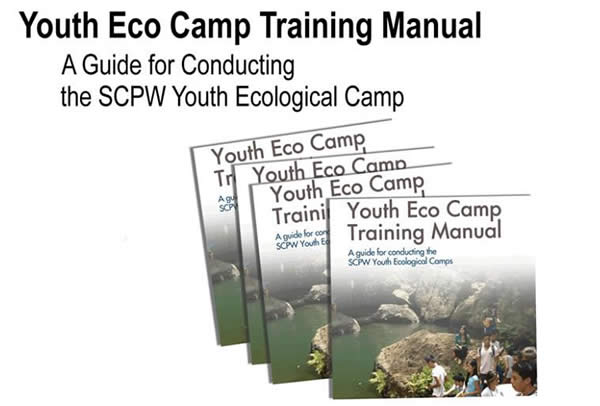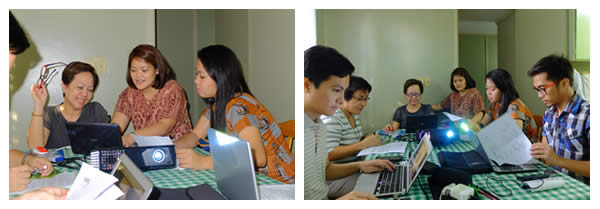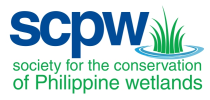Youth-in-Action for Disaster Risk Preparedness and Reduction:
Resilience and Adaptation Strategies by the Youth
The project endeavored to help reduce the disaster risks faced by the municipalities of Balete, Mataasnakahoy, and Tingloy through increased community participation and youth involvement. It is being implemented through United Nations – World Food Programme’s Disaster Preparedness and Response Programme in the province of Batangas.
to know more about the project >>
Youth Eco Camp Training Manual:
A guide for conducting the SCPW Youth Ecological Camp
The Society for the Conservation of Philippine Wetlands, Inc. (SCPW) with its CLEAR Partners composed of Unilever Philippines and the Laguna Lake Development Authority embarked on a Youth Ecological Camp (YEC) in 2003 to provide an experiential learning venue for lake conservation for High School students in the Laguna de Bay lakeshore towns. CLEAR is Conservation of Laguna de Bay’s Environment and Resources. The first YEC was held in Tanay and as of December 2016, 17 Camps have been conducted in 16 municipalities with more than 400 students directly benefitting from the 3-day course, and there are more than a hundred school- and community-based wetland conservation projects being implemented in the 92 High Schools that participated in these YECs in the Laguna de Bay Region. Three other camps were conducted using the same curriculum that centred on an ecosystem-based approach to wetland conservation in Lake Buhi, Agusan Marsh Wildlife Sanctuary and Naujan Lake.

In 2013, the United Nations World Food Program (UN-WFP) as part of its umbrella program on “Disaster Preparedness and Response Programme” (Building Resilience Against Disasters and Climate Change), recognized the merits of the Eco-Camp as a vehicle for teaching High School students about disaster risk reduction and preparedness and its link to the integrity of ecosystems, particularly wetlands. It should be noted that more often than not, wetlands are areas where disasters can occur frequently particularly when people are vulnerable and exposed to or are located in wetlands places like coastal areas, along rivers and lakes, and in floodplains. The SCPW believes that long-term programs for disaster preparedness should include taking care of our natural environment particularly wetlands because these specific ecosystems provide a natural hedge to climate change impacts. Among the ecosystem services provided by wetlands are water storage to prevent flooding, physical barriers against wave action such as mangroves, and provision of food and livelihood. Recognizing the interlinkages and taking advantage of the Youth Ecological Camp as a platform for engaging the Youth on Disaster Risk Reduction and Management (DRRM) and preparedness, the UN-WFP and the SCPW worked together to develop a curriculum that would deliver this message to the Youth. Thus, from a straightforward conservation curriculum, the YEC was transformed into a learning adventure that provides a seamless integration of ecosystem concepts and disaster risk reduction and preparedness.
A Training of Trainers (ToT) for conducting the Eco-Camp using the new curriculum was held for ten High School teachers from three municipalities in Laguna namely Mabitac, Rizal and Pila. It was held back-to-back with an actual Eco-Camp that served as their practicum. The curriculum was further improved based on the experiences in these Camps and was again used for the second set of Eco- Camps in Mataasnakahoy, Balete and Tingloy in Batangas Province. So far, the results of the Eco- Camps have been outstanding just like the initial Eco-Camps using the original curriculum. These results are also supported by the sustained implementation of school-based projects by the participating High Schools. With the curriculum and methods proven to be successful in conveying messages to the Youth, it is high-time that the activity be upscaled especially in highly vulnerable wetland areas. However, it will be very costly to conduct ToTs even just in priority wetland areas that are vulnerable to disasters. The Manual was therefore produced to provide a guide to people and organizations who would like to conduct a Youth Ecological Camp specifically designed for High School Students. Through the Manual, the reach of educating teachers as well as the Youth on DRRM and CCAM concepts will be expanded and their capacity to take action for wetland conservation and DRRM and CCAM will be enhanced.

N.B.
Copy/s of the Manual is available at the SCPW office.

